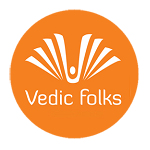Pattern Recognition
Optical Character Recognition

OCR is generally an "offline" process, which analyses a static document. Handwriting movement analysis can be used as input to handwriting recognition. Instead of merely using the shapes of glyphs and words, this technique is able to capture motions, such as the order in which segments are drawn, the direction, and the pattern of putting the pen down and lifting it. This additional information can make the end-to-end process more accurate. This technology is also known as "on-line character recognition", "dynamic character recognition", "real-time character recognition", and "intelligent character recognition".
Types-
- Optical character recognition (OCR) – targets typewritten text, one glyph or character at a time.
- Optical word recognition – targets typewritten text, one word at a time (for languages that use a space as a word divider). (Usually just called "OCR".)
- Intelligent character recognition (ICR) – also targets handwritten printscript or cursive text one glyph or character at a time, usually involving machine learning.
- Intelligent word recognition (IWR) – also targets handwritten printscript or cursive text, one word at a time. This is especially useful for languages where glyphs are not separated in cursive script.
OCR engines have been developed into many kinds of object-oriented OCR applications, such as receipt OCR, invoice OCR, check OCR, legal billing document OCR.
They can be used for:
- Data entry for business documents, e.g. check, passport, invoice, bank statement and receipt
- Automatic number plate recognition
- Automatic insurance documents key information extraction
- Extracting business card information into a contact list
- More quickly make textual versions of printed documents, e.g. book scanning for Project Gutenberg
- Make electronic images of printed documents searchable, e.g. Google Books
- Converting handwriting in real time to control a computer (pen computing)
- Defeating CAPTCHA anti-bot systems, though these are specifically designed to prevent OCR
- Assistive technology for blind and visually impaired users


 Facebook
Facebook Twitter
Twitter LinkedIn
LinkedIn Google
Google